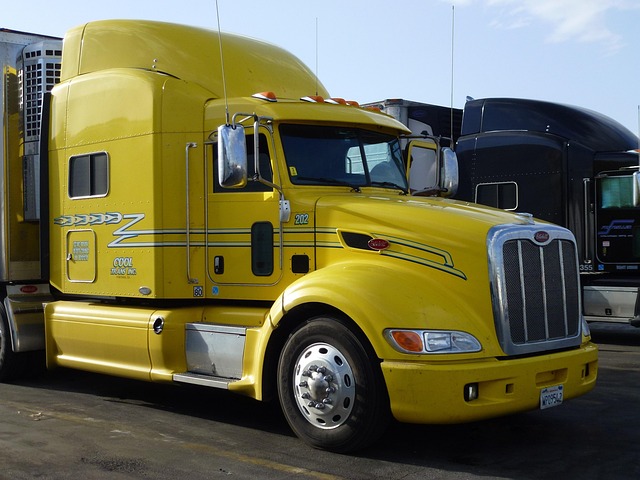Learn how to register your car in California with our step-by-step guide. Before you begin, understand the requirements for car registration in the Golden State, including necessary documents like proof of insurance and ownership. Gather these essentials and head to your local DMV to complete the process. Verify your vehicle’s Identification Number (VIN) using a trusted service for added security. Finally, pay the required fees and receive your official registration documents. Don’t forget to use our recommended dmv vin verifier for peace of mind.
- Understand the Requirements for Car Registration in California
- Gather Necessary Documents for Vehicle Registration
- Visit the DMV and Complete the Registration Process
- Verify Your Vehicle's Identification Number (VIN) with a Trusted Service
- Pay the Required Fees and Receive Your Registration Documents
Understand the Requirements for Car Registration in California

Before registering your car in California, it’s crucial to understand the state’s requirements. The process involves several key steps and documents. One essential element is ensuring your vehicle has a valid Vehicle Identification Number (VIN) inspection. This verification ensures that your car meets safety and environmental standards set by the state.
In California, the Department of Motor Vehicles (DMV) requires you to present a current VIN inspection report as part of the registration process. A mobile vin verifier or a traditional vin inspection at an approved facility can be used to obtain this crucial document. This step is vital to demonstrate that your car is safe and compliant with California’s regulations, ensuring a smooth registration experience.
Gather Necessary Documents for Vehicle Registration

Before you start the registration process, ensure you have all the essential documents ready. The California Department of Motor Vehicles (DMV) requires a variety of paperwork to verify your vehicle’s ownership and identify its history. One crucial document is the Vehicle Identification Number (VIN) verifier, which can be obtained through a mobile vin inspection or by visiting a DMV office. This unique code is like a fingerprint for your car and plays a vital role in identifying it for registration purposes.
Along with the VIN verifier, gather other necessary documents such as proof of ownership, vehicle title (if applicable), current insurance card, and a valid driver’s license. Additionally, if you’re importing a vehicle or transferring ownership, specific additional forms may be required. It’s best to check the DMV’s website for an up-to-date list of accepted documents to ensure a smooth registration process.
Visit the DMV and Complete the Registration Process

After gathering all the required documents and ensuring your vehicle meets California’s standards, it’s time to visit a DMV office. The registration process can be efficiently completed by following the steps outlined by the Department of Motor Vehicles (DMV). Start by filling out the necessary registration forms, providing accurate information about your vehicle, including its make, model, year, and unique Vehicle Identification Number (VIN). A DMV vin verifier is used to ensure the VIN is valid and matches the vehicle in question.
At this stage, you may also be required to undergo a vin inspection, which can often be facilitated by mobile vin verifiers. These tools enable on-site VIN verification, making the process smoother. Bring your documents, including proof of insurance, ownership transfer paperwork, and any applicable fees, as these are crucial for completing the registration successfully. The DMV staff will guide you through the rest of the procedure, ensuring your car is officially registered in California by the end of your visit.
Verify Your Vehicle's Identification Number (VIN) with a Trusted Service

Before registering your car in California, it’s crucial to verify your vehicle’s Identification Number (VIN) with a trusted service to ensure its authenticity and avoid any potential issues. The DMV (Department of Motor Vehicles) recommends using a mobile vin verifier or mobile vin inspection tool for this purpose. These services allow you to cross-reference the VIN against reliable databases, confirming that it matches the vehicle’s official records.
A mobile vin verification process is straightforward and secure. You simply input your VIN into the chosen application, which then provides instant validation along with essential details about your car’s history. This step is an integral part of the registration procedure as it helps prevent fraud, ensures compliance with California’s regulations, and protects you from potential legal complications down the line.
Pay the Required Fees and Receive Your Registration Documents

After ensuring your vehicle meets all necessary requirements, it’s time to pay the required fees and finalize your California car registration. The California Department of Motor Vehicles (DMV) will process your application and issue your registration documents, which include a registration card and a sticker that must be displayed on your vehicle’s window.
The fees involved cover various costs, including a vehicle registration fee, title transfer charges if applicable, and potentially additional taxes. One crucial step before receiving these documents is to have your Vehicle Identification Number (VIN) verified. You can do this through a mobile VIN inspection or by visiting a DMV office, ensuring the accuracy of your vehicle’s information, which is essential for safety and legal compliance.
Registering your car in California is a straightforward process that requires understanding the state’s regulations, gathering essential documents, and visiting a DMV office. By ensuring you meet all requirements, including verifying your vehicle’s Identification Number (VIN) using a trusted service like a dmv VIN verifier, you can efficiently complete the registration process. After paying the necessary fees, you’ll receive your official registration documents, making your vehicle legally registered in California.
